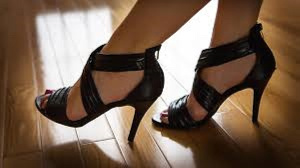Opinions of Tuesday, 3 August 2021
Columnist: Elizabeth Apetse
High heels trend and some health implications
What defines glamour and sophistication in the fashion world? pouty lips, shimmering dresses, or high heel shoes?
In fact, ladies high heels have long been a symbol of style and sensuality.
We buy the concept of high heel shoes but do you know the side effects of high heels? The health risks associated with wearing killer heels?
High heels are a type of shoe in which the heel is significantly higher off the ground compared to the toes. There are many types of high heels, which come in different styles, colours, and materials, and can be found all over the world.
The first known pictorial evidence of high heels comes from 10th-century Persia (Iran) where they were worn by men in combination with stirrups for horse riding.
Heels have had significant cultural and fashionable meanings attached to them over the past 1,000 years, especially regarding the social construction of gender in the West.
Although in the 17th century high heels were the sign of masculine power and social status by the 21st century narrow high heels represented femininity and "erotic capital" although a thick high heel was still acceptable for males in some situations.
Wearing high heels is associated with health risks such as a greater risk of falls in the elderly, musculoskeletal pain, developing foot deformities, and developing varicose veins.
A 2001 survey conducted by researchers from Pennsylvania State University using 200 women found that 58% of women complained of lower back pain when wearing heels and 55% of women said they felt the worst overall back pain when wearing the highest heel.
The researchers explained that as heel height increases, the body is forced to take on an unnatural posture to maintain its centre of gravity. This changed position places more pressure and tension on the lower lumbar spine which explains why the women complained of severe back pain at a higher heel length.
A study from the Journal of Orthopaedic Research found that wearing high heels that are 3 1/2 inches or higher can increase your lifetime risk of osteoarthritis, a leading cause of disability in women. Wearing even higher shoes can have a higher impact on your risk.
Osteoarthritis is caused by stress to the cartilage and can result from injury or from general wear and tear on the joint.
The poll also found that 77% of both men and women do not wear shoes designed specifically for the sport they are doing.
This can cause injury and stress on the joints, increasing the risk of the debilitating condition.











